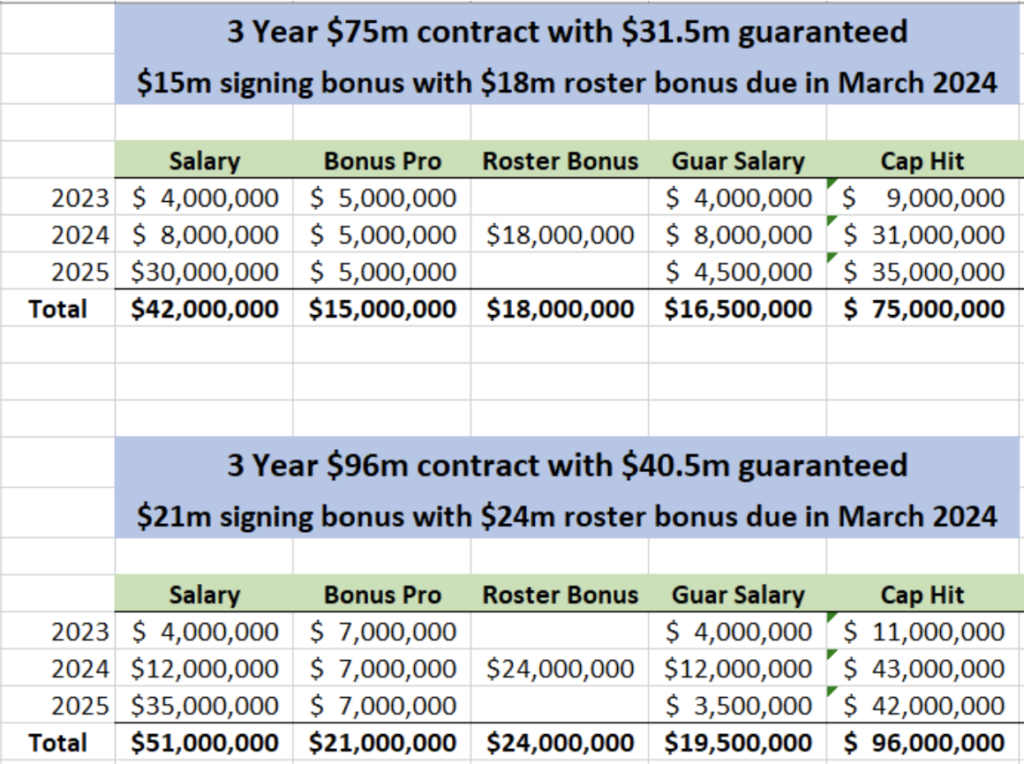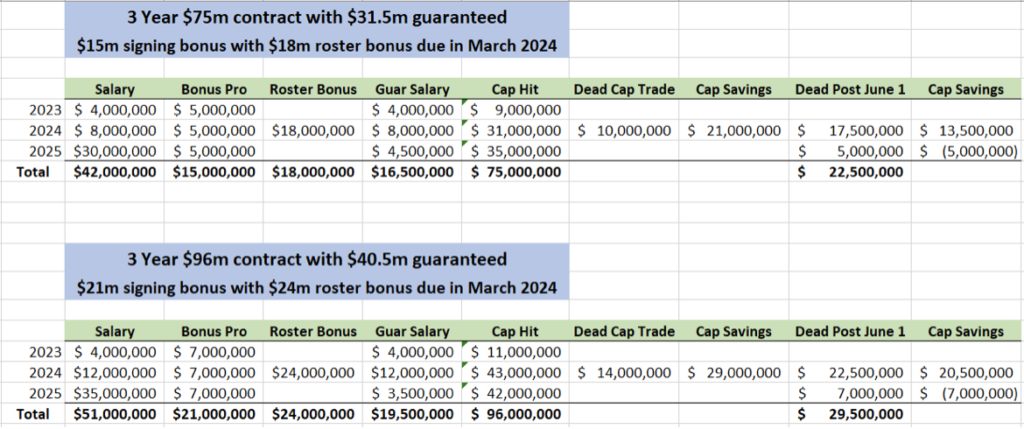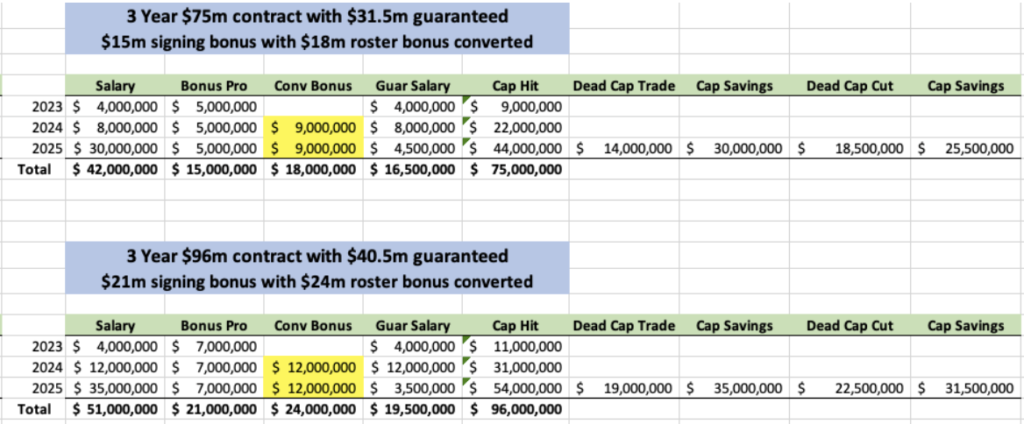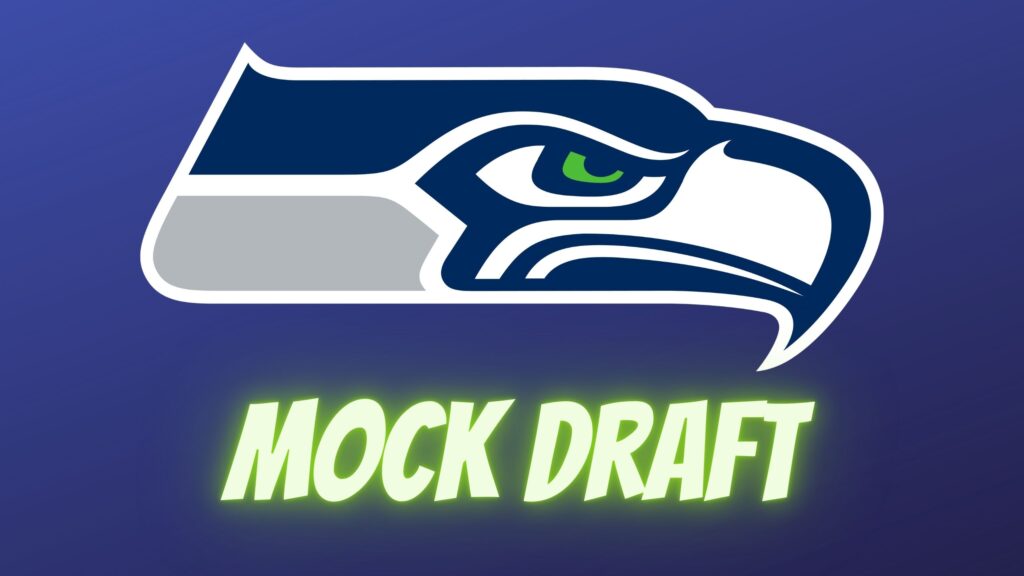There were a couple of big takeaways from the South Carolina vs Clemson game. First of all, Clemson’s D-line reminds me of Premier League side Manchester United. Big names, big expectations, lots of hype. Yet they consistently flatter to deceive. I can’t recall a game recently where they dominated. However, that defeat to Notre Dame lives long in the memory where they got their arses kicked in the trenches.
Bryan Bresee continues to be spelled like crazy because of strep throat, Myles Murphy was again missing in action. K.J. Henry is the one who creates the most pressure but he doesn’t finish enough plays with a sack.
Yet if you log onto any draft website you barely ever hear anything negative about Bresee or Murphy. They just get chucked into the early first round and everyone assumes they’re brilliant.
I understand why there’s a chance they’ll both go early. Murphy can reportedly run a 4.5 at 275lbs. Bresee can run a 4.7 at over 300lbs. They are both well sized, fantastic athletes. That can and should be acknowledged. Yet the tape isn’t good. Murphy only has 6.5 sacks for the season despite playing a high number of snaps. I’ve said a hundred times now, I think he plays the run like a pussycat. Bresee has had a difficult year for reasons we’ve discussed in the past — but he’s offered little more than an occasional flash.
So I suppose the question to ask is — for a player like Murphy — why is he suddenly going to turn on the production against NFL linemen, without the advantage of playing next to a loaded, 5-star D-line?
I fear he and Bresee are two players who have simply been far more athletic than anyone else in High School and college and they’ve been able to get by. At the next level, they won’t have the same significant advantage. They’ll need to play with more aggression, better technique and they’ll need to become proper football players. How early are you willing to take a chance on that?
The second takeaway is Spencer Rattler has as much natural talent as anyone in college football. For the second game in a row, after his demolition of Tennessee, he made incredibly difficult throws look easy. The problem is — he continues to have at least one absolutely horrendous decision in him every game. Sometimes, it’s multiple horrendous decisions.
In the Clemson game he threw an awful red zone interception which, at the time, acted like a cold bucket of water over everything else he’d shown to that point. Yet he finished the game strongly.
I hope he returns to South Carolina. Something is brewing there. If he goes back, has a successful season and not just a couple of good games, he can really propel himself back into the NFL discussion. Otherwise you’re still talking about a late day three flier on someone who will essentially be handing NFL teams a two-game résumé.
There are some really nice running backs eligible for 2023 and Kenny McIntosh of Georgia continues to excel. He’s an incredible pass-catching back to go with his tenacious, violent running style. Against Georgia Tech he had a +80 yard reception with a brilliant piece of ball-tracking over his shoulder, before a hefty chunk of YAC down the sideline. He then ran it in for a short-yardage score. He is destined to be a tremendous complementary back at the next level.
I’m really tempted to move Georgia center Sedrick Van Pran to the top of my positional list. He was brilliant again on Saturday. He turned interior linemen to create huge running lanes up the middle. He sprung a massive touchdown run in the fourth quarter by chipping the defensive tackle in a double team with the guard, then progressing to the second level and driving a linebacker off his spot. The running back followed him the whole way for an untouched scoring carry. Van Pran, if he turns pro, will be a high pick in my opinion. I’m not sure what his plans are but he is legitimately someone I think you can make a case for in the top-45.
Anthony Richardson is still being talked about as a raw, unpolished player. I think that is an outdated assessment. He is not the finished article — but who is at this point? Very few players are. While the occasional inaccurate throw still blots his copybook, you’re not drafting a hybrid Josh Allen/Lamar Jackson quarterback to play like Peyton Manning. Whatever he gives up in the occasional miss, he more than makes up for in world class playmaking talent.
Without Richardson I’m not sure how many games Florida would’ve won this year. There’s very little to shout about apart from the quarterback and leading running back. Against Florida State, Richardson was let down by his receivers on several occasions and had to try and desperately keep up with FSU. He had an incredible 3rd and 8 conversion — spinning away from tackles, running through contact to get the yardage. He had some outstanding throws — including one down the seam for a touchdown — but again, some that he missed too. He has amazing potential that just needs to be harnessed. Any coach worth his salt is going to be begging the GM to let him have a crack at Richardson. Especially if you’re willing to be patient with him.
He has 26 total touchdowns and nine interceptions for the year, playing for a rebuilding team in the SEC. Alternatively, C.J. Stroud has the perfect environment to succeed at Ohio State and has 37 total touchdowns and six interceptions. People act like there’s a big difference here but there isn’t.
Before I speak about Bryce Young — a word on Alabama’s Byron Young. Whether he is shooting gaps or just pushing his blocker into the backfield — he is constantly disruptive. He’s so underrated. He’ll not be a big-time playmaker at the next level but he’ll certainly do a job as a 3-4 DE.
Bryce put in a typical Bryce performance. If you can’t pressure him and force him to bail on the pocket, he will sit and pick you apart. He had all the time in the world against Auburn and was able to throw with accuracy, timing and step into downfield throws. It was an easy day and a good showcase for his talent. The thing is, he’ll never get it this easy at the next level. He did throw a dreadful interception over the middle — flat footed, didn’t step into throw, made it easy for the defender to undercut the route. Overall it was a good day but we know what he is by now, strengths and weaknesses. How the NFL judges his size/frame will be a big talking point throughout draft season. As I’ve said a few times — I don’t think anyone is wrong or right about it. If you worry about the frame, that’s valid. If you don’t and would happily take a shot, that is perfectly plausible too.
Utah tight end Dalton Kincaid had another big day (albeit against hapless Colorado). I just get the feeling he’s going to carry on making plays at the next level if he lands in the right offense. He’s quite a talent.
Another tight end, Notre Dame’s Michael Mayer, showed why he should be a top-12 pick with another great performance against USC. He was constantly able to win battles in coverage to make receptions and he had a great TD boxing out a smaller defensive back. He’s a huge red zone weapon, a prolific playmaker and a great safety valve. Mayer is such a consistent, talented player.
Kentucky running back Chris Rodriguez wears #24, says he grew up watching Marshawn Lynch and he runs just like him. He’s so strong, powerful and drives through contact. He would be a great option for Seattle. Rodriguez was so good again against Louisville.
Will Levis also had a decent end to his SEC season, throwing 11/19 for 188 yards and two touchdowns in a key rivalry win. We’ll see if Levis plays in the Bowl game, I would hope he doesn’t given what has happened this season with Kentucky’s O-line. He’s already nursing two injuries and the fact he’s not confirmed for the Senior Bowl yet suggests he might need some surgery or recovery time. Rodriguez has confirmed he’ll be in Mobile.
When I talk about systems and environments giving certain QB’s a big advantage in terms of production, not being sacked and winning — nothing highlighted it better than Tennessee’s win at Vanderbilt. They hammered Vandy — one of the toughest, in-form teams in CFB in recent weeks — despite losing Hendon Hooker to an ACL injury. We all know Ohio State and Alabama will also retain their production next year when their QB’s move on. Ditto Washington. Kentucky and Florida, on the other hand, are going to be in serious trouble. The advantages and disadvantages, experiences and pressure on the different QB’s doesn’t get talked about enough among fans and media. People watch prolific production, pretty (albeit wide-open) throws and jump to conclusions far too often.
This brings me on to Michael Penix Jr, who I like. He has grown on me over time because of his fantastic arm. Without a question, there’s something to work with there. However, I’m reading all this ‘Penix Jr for Heisman’ stuff and people talking on the radio about him being a first round pick and it just gets so frustrating.
Even Pete Carroll was asked on Seattle Sports about Penix Jr this week. His answer, tellingly, highlighted the great scheme he plays within. And there you go. Carroll nailed it with that answer.
When you operate in a half-field, one-read scheme that makes all the calls for you on the sideline and consistently is able to cook up situations where your receivers are wide open, you will have a lot of success. There weren’t many challenging throws for Penix Jr in the Apple Cup. Granted, he can drive the ball in such an attractive way — you can’t help but be impressed. Even a throw to a wide-open receiver can look amazing if delivered with an eye-catching flick of the wrist.
Yet I feel like I keep repeating myself on this — probably in a futile way, given I suspect people who read this blog already get it. At the next level you need to run through progressions, make checks and calls yourself, you need to make quick decisions and deliver precise throws into smaller windows. None of this is evident in the Washington, Ohio State and Tennessee schemes. The quarterbacks are all babied, given advice from the sideline and often just need to look off the safety and throw to the one-read. If everything clicks — you throw to an open guy most of the time. We’ve all seen what happens when it doesn’t because Stroud, Penix Jr and Hooker have all thrown identical interceptions into triple coverage.
Because of Penix Jr’s arm strength, when the scheme puts people downfield in space and he has all the time in the world to throw, it’s easy. This from Monday’s article highlights how much time Penix Jr has in the pocket…
Sacks conceded per-game in 2022:
Oregon — 0.4
Washington — 0.5
Georgia — 0.5
Ohio State — 0.7
Florida — 1.3
Alabama — 1.5
Tennessee — 1.9
Kentucky — 3.5
So if your guys are open and you have all the time in the world to throw and you have a big arm — production is inevitable.
Kudos to Washington for finding a coach in Kalen DeBoer who is essentially their answer to Josh Heupel. It should mean offensively they are productive for years to come, will regularly churn out prolific QB’s and they will have success provided they can deliver a complementary defense. We should be honest and up front about the scheme though and what it does for the quartetback.
Sadly, when Penix Jr has had to go off script and make decisions — we see things like the horrendous red zone interception he had against Washington State. In the NFL he won’t be able to sit there and just lob downfield to players with five yards of separation from a clean pocket. He will have to process and improvise and go through progressions. I’m not sure we have enough on tape to feel confident about that and as such, it tempers his stock. For me — the arm puts him in the third round range but even then he is a project who will need time to learn the ways of the NFL. When he gets a chance, he’ll need to show he can function outside of the college system he benefits from.
Pittsburgh’s Calijah Kancey and TCU’s Quentin Johnston didn’t play at the weekend due to injury.
And with that, the college football regular season is over. I will share notes on the Championship weekend and then we’re into the Bowls, where most draft prospects will opt to sit out and declare for the NFL.
I hope you’ve found the last 13 weeks useful. I’ve poured my heart into watching tape this year, knowing it was such a big draft in 2023 for the Seahawks. We’re talking 8-10 hours on a Saturday after I finish broadcasting for my day job, then multiple hours on Sunday with follow up study every week night after I finish work.
I’ve always suggested this has been like a second full-time job for me, running this blog. Since the summer it’s been more like a second and third full-time job. I don’t get everything right and never will but I hope it’s provided a decent overview of the draft in advance of the mainstream media arriving on the scene in January to tell you a load of information without any of the September-December groundwork.
If you’ve enjoyed the work and want to support the blog so that I can consider options for the pre-draft coverage in the new year, please consider supporting the site via Patreon — (click here)





